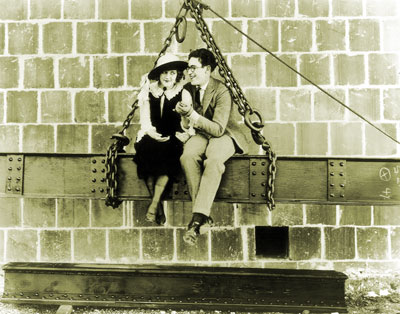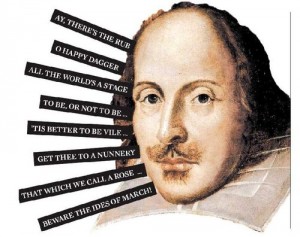Cyd Charisse and Gene Kelly in Singing in the Rain, 1952
While I was at my parent’s house for Thanksgiving, I decided to stay the night so I could more easily go to the famous Sun City Arts & Craft Show the next day. That night, I stayed up with my dad and we got to watch a compilation film done by silent film comedian Harold Lloyd in 1962, that featured all of his best work. I will admit that other than his most famous film Safety Last, and really only the clock tower scene, I hadn’t really watched anything of his. My husband is less appreciative of classic Hollywood movies than I am, so the only time I really get to watch good old movies is when I am with my parents, and more specifically with my dad. He really got me interested in Old Hollywood films circa 1890s-1950s, and it was because of him that I took some film history classes during my undergraduate career. My parents are the reason I grew up watching film stars like Gene Kelley, Cyd Charisse, Fred Astaire, Howard Keel, Leslei Caron, Ann Miller, Frank Sinatra and Bob Fosse instead of more traditional 80s and 90s stars like Molly Ringwald, Matthew Broderick or Jennifer Grey. The last star at least I made up for in Graduate School the first time as my friends and I went through an obsessive Dirty Dancing faze.
Harold Lloyd in Safety Last!, 1923
Anyways, I enjoyed watching the compilation movie Harold Lloyd’s World of Comedy, not only because it prompted an in-depth conversation, with my dad, about the three great silent film comedians: Charlie Chaplin, Buster Keaton and of course, Harold Lloyd. We talked about the differences in their style of comedy, but my dad didn’t know all that much about Lloyd’s background so I thought it might be fun to research it. Harold Clayton Lloyd was born in Burchard, Nebraska on April 20, 1893 and from an early age, had an interest to perform on stage. He enrolled in the School for Dramatic Arts in San Diego, CA. He originally snuck onto the Universal Pictures studio lot and met famous producer Hal Roach, who would later go on to produce Laurel & Hardy movies, who let Lloyd join his new production company. Lloyd starred in many “Lonesome Luke” films, where he played similar to Charlie Chaplin’s tramp. He knew this would not go far with early silent film audiences, so he completely changed his persona. He became the everyman with his trademark round horn-rimmed glasses, straw boater hat and messy suit. According to his official biography from Harold Lloyd Entertainment “Harold was the first film comedian to portray a character that looked and acted like someone sitting in the audience – an average guy, the boy-next-door. With this “glass” character as Harold called it, He could experience the humor in everyday life. And, as an average fellow, Harold’s boy-next-door could have a romance. It was the beginning of romantic comedy in films. As his new character grew more popular, the one-reel comedies became two-reels.” I should first explain a little bit about the terminology one-reel and two-reels. According to Encyclopedia Britannica, “In the early days of motion pictures, each reel ran about 10 minutes, and the length of a picture was indicated by the number of its reels.” Therefore it was possible for early film comedians like Chaplin, Keaton and Lloyd to literally makes hundreds of films during their extensive careers. By 1922, Lloyd had progressed from making two-reel films to five reels (modern full-length movies).
In August 1919, Harold Lloyd was posing for a photographer with a cigarette, which he was lighting with what he thought was a prop bomb. Only it wasn’t a fake and it went off, temporarily blinding him and taking off his pointer finger and thumb of his right hand. The doctors believed his career was over, but he recovered and had a prosthetic hand made so he could continue working in film for a further 29 years and making a total of 200 films. So it is pretty crazy to imagine him only holding on to the famous clock hand on the side of a building in Safety Last with his left hand and only three fingers on his right hand! Even more so because apparently despite all his crazy stunts involving tall buildings, he was afraid of heights.
The reason he is a genius stems from his knowledge of his audience. He knew just how to be both funny and moving. According to the PBS American Master’s webpage, he also knew how much fear helped heighten comedy. “One day while on his way to the studio, he watched a man scaling the side of a building. Crowds had gathered around and were completely consumed by the sight of the climber. Lloyd knew that if he could keep an audience on the edge of their seats like this, he could make them laugh even harder. So, using the tricks of photographic perspective, he began to shoot scenes that looked as if they were happening on the sides of buildings, on scaffoldings, or hanging from clocks. These acrobatic hi-jinks seemed amazingly real in a time before special effects. More than simply renewing the audience’s interest in his work, these progressive techniques earned him the respect of others in the film industry.” My dad and I watched several snippets of his films, including Safety Last and Why Worry? that use these “thrill comedy” techniques. When Safety Last opened in 1923, it was immediately a huge success and he was nicknamed “The King of Daredevil Comedy”. According to his biography from Harold Lloyd Entertainment, “By the mid 1920’s, Harold had left Roach and was producing all the films in which he starred. Of all the silent film comedians, Harold Lloyd was the most profitable. His films out grossed the movies of Charlie Chaplin and Buster Keaton, and he made more films than both of them put together.” I find this film gross fact to be particularly fascinating as I would say most people nowadays have never heard of Lloyd, but have heard of Chaplin and may have heard of Keaton. The biography goes on to say that “In 1928, Variety proclaimed him the highest paid film star. When talking pictures came along, Lloyd was one of the first filmmakers to embrace the new medium. He was the fifth film star to immortalize his hand and footprints in the pavement outside Grauman’s Chinese Theatre in Hollywood, and he has two stars on the “Walk of Fame.” So go check him and his movies out!
Resources
Biography Section from Harold Lloyd’s Entertainment website
PBS American Masters biography section about Harold Lloyd
Encyclopedia Britannica article on reels













You must be logged in to post a comment.